
Film Review | Captain Marvel
Producers: Marvel Studios, Walt Disney Pictures
Runtime: 130 minutes
MPAA Rating: PG-13
EE Critic Score: 8/10
Captain Marvel is the twentieth installment in the Marvel Cinematic Universe. Set in the 1990s, it is a prequel to all other installments besides Captain America: The First Avenger. It focuses on an amnesiac special agent from an alien world whose missions take her to Earth, a planet she discovers she has a connection to.
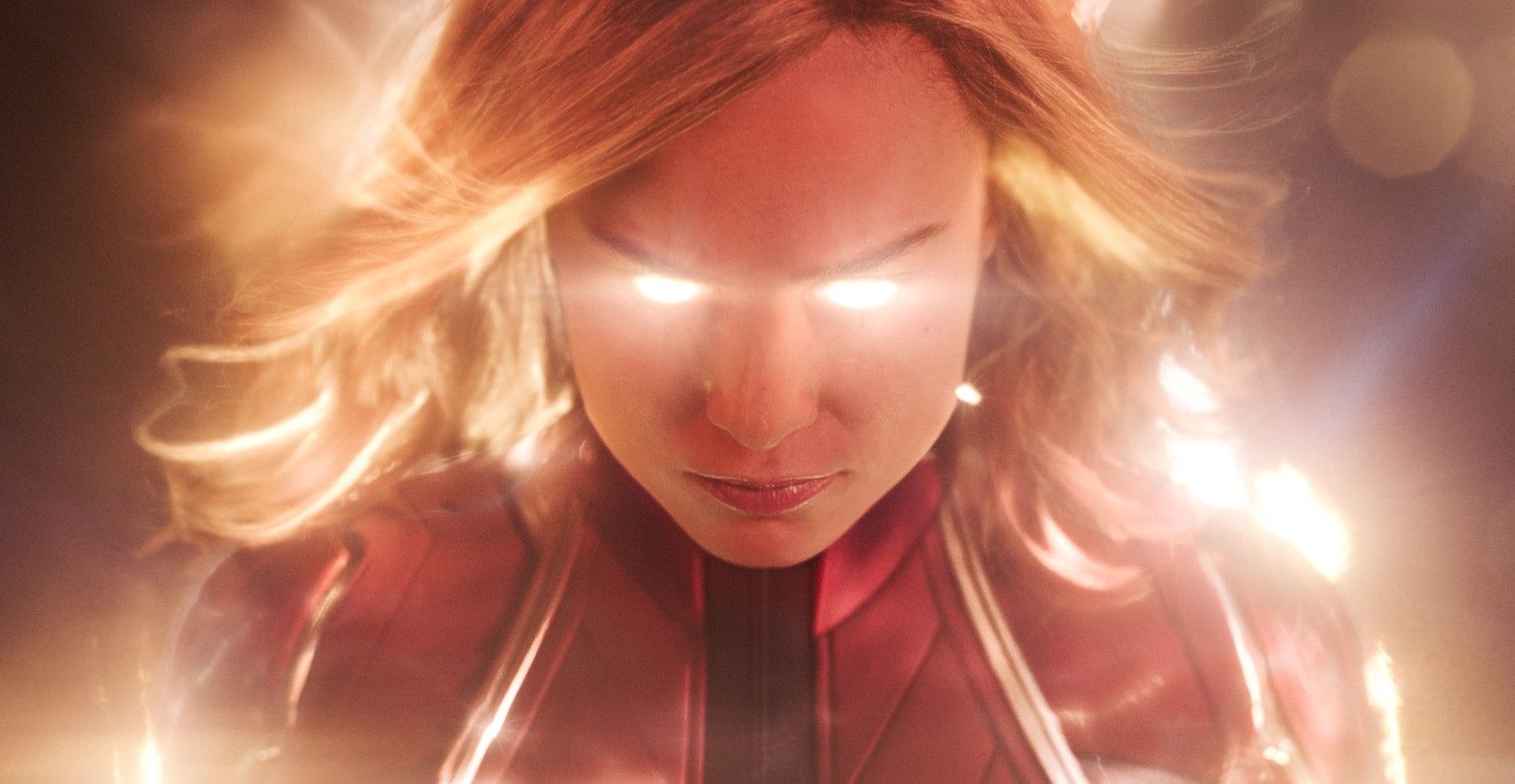
Synopsis
On Earth, it is the year AD 1995, but we do not open on Earth, but on Hala, capital world of the Kree, a star-spanning empire ruled by an AI known as the Supreme Intelligence. Specifically, we open on Vers (Brie Larson), a member of the Kree Starforce who uses her unique energy manipulation abilities (connected to cybernetic implants) to serve the empire, who she credits with saving her from some catastrophe in her past, which she has no memory of. Vers and her squadron, led by Commander Yon-Rogg (Jude Law) are tasked with finding and eliminating groups of Skrulls, a race of shape-shifters who have infiltrated several Kree worlds and resisted the rule of the Supreme Intelligence. If the Skrull’s presence on a world is found to be too pervasive, Starforce will alert the Accusers, led by Ronan (Lee Pace), who will judge the world as a lost cause and destroy it from orbit.
On one such mission, the Skrulls manage to capture Vers. The Skrull leader, Talos (Ben Mendelsohn), has Vers interrogated. The memory retrieval device fills Vers’s mind with odd scenes, seemingly memories of her past. These memories do not seem to take place on Hala or any other Kree world.
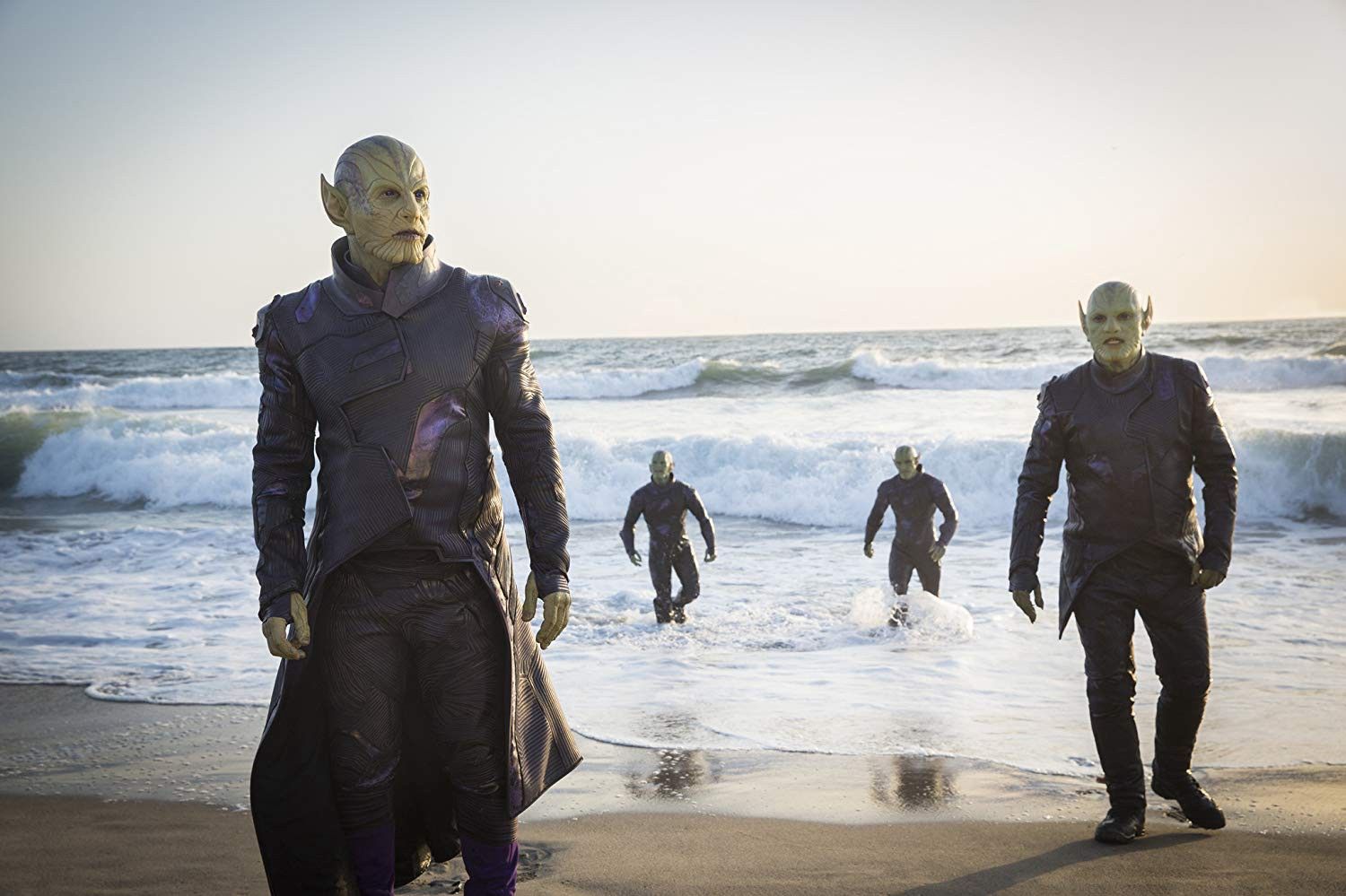
Vers is able to fight her way off the Skrull ship, and arrives on Earth, which the Kree know simply as Planet C-53, crashing into a Blockbuster Video rental store in Los Angeles in the middle of the night. She is approached the next morning by SHIELD agents Nick Fury (Samuel L. Jackson) and Phil Coulson (Clark Gregg), who, at first, are totally disbelieving of her claims of being an officer of the Space Force pursuing shape-shifting lizard people who may have already infiltrated Earth’s government. Talos arrives, seeking to recapture Vers, who spots a Skrull agent and chases him through the city. Fury pursues her, along with another Skrull disguised as Coulson. When the real Coulson calls Fury, inquiring why he drove off without him, Fury realizes that he is with an imposter and crashes his car, killing the Skrull. He takes the body to a lab, where he shows it to SHIELD Director Keller, before departing to find Vers.
She had lost track of the Skrull, but had recovered from him a recording of her interrogation session. She realizes that the visions she had seen were of C-53, specifically of an Air Force base in Nevada which Vers encounters during her pursuit. Fury finds her there, and agrees to help her. He uses his security clearance to get her on the base. Documents in their archives feature photos of Vers, identifying her as Carol Danvers, a test pilot. There are also photos of a Dr. Wendy Lawson (Annette Bening), a researcher whose image is that used by the Supreme Intelligence, who appears differently to each Kree (as the person they most admire), when it would manifest to Vers.
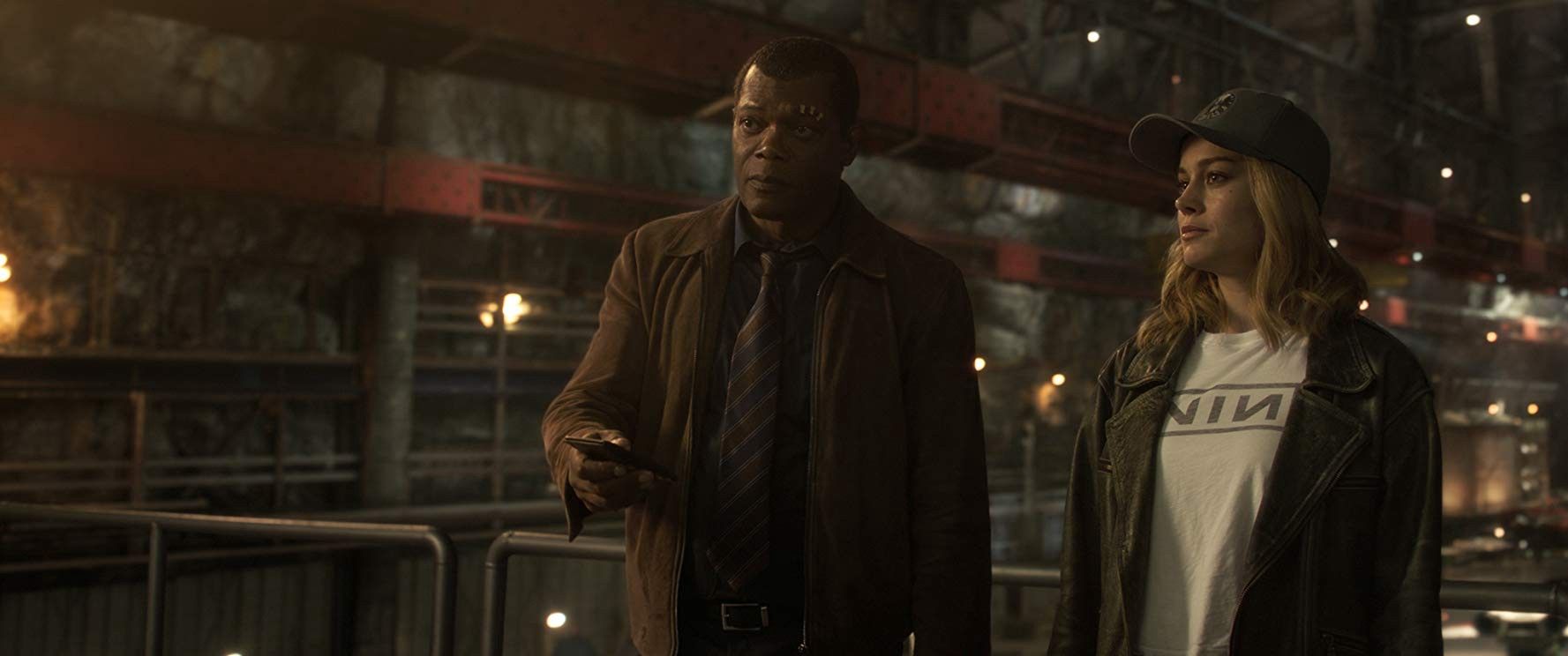
SHIELD arrives, led by Keller, demanding to take Vers into custody. Director Keller confronts Fury, who finds that he is not Keller, but Talos, who had captured and replaced the real Keller. Vers and Fury escape in a prototype Quinjet, along with a cat named Goose, the base mascot who stows aboard. They fly to Louisiana, to meet with Maria Lambeau (Lashana Lynch), another former test pilot who should know about Vers’s past.
Lambeau and her daughter, Monica (Akira Akbar), immediately recognize Carol Danvers, who they thought had been killed in a crash, along with Dr. Lawson. Confronted with the evidence, Vers concludes that she is, in fact, a Human, not a Kree, and speaks with Lambeau, attempting to recover the knowledge of her life on Earth.
It is not long before Talos arrives. He takes Monica hostage unawares, sending one of his agents disguised as her mother, and demands an audience with Danvers. He tells her that Wendy Lawson was actually Mar-Vell, a Kree scientist who had been researching space travel on behalf of his people. The Skrulls, he says, do not seek to destroy the Kree, but to escape them. The Kree, fearing the Skrull’s powers and resenting their independence, had destroyed their homeworld and sought to exterminate them. Mar-Vell had offered them shelter and the chance to leave the regions of space controlled by the Kree and live on a new world in peace.
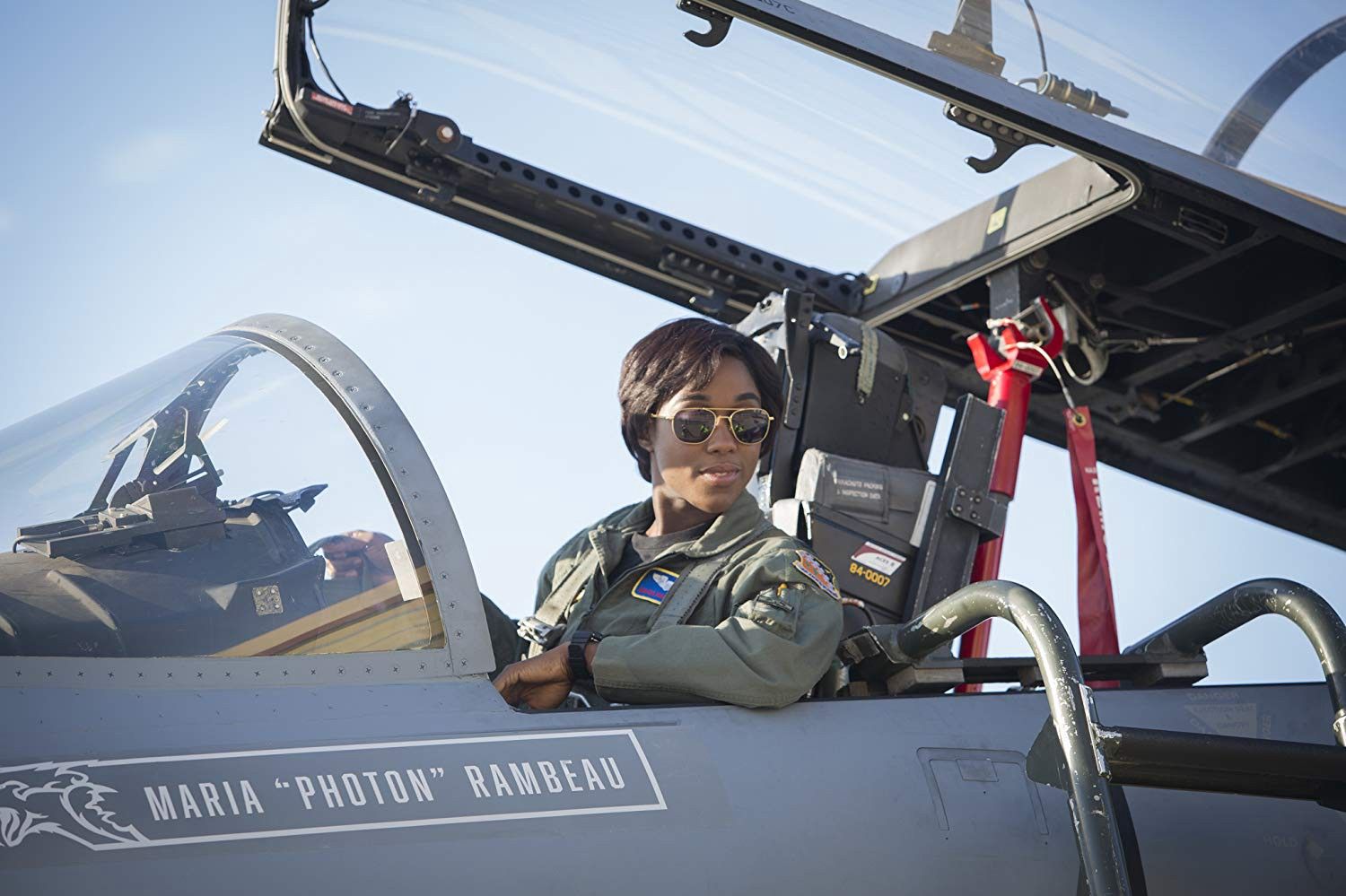
Considering that the Kree had apparently also lied to her about her history, Danvers agrees to help Talos (who, incidentally, is very wary of Goose, which he calls a “flerken”). The Skrulls make modifications to the Quinjet, allowing it to travel to Earth’s orbit, where they find Mar-Vell’s concealed research satellite, along with a group of Skrull civilians, including Talos’s family. The core of Mar-Vell’s research is the Tesseract, a strange artifact capable of manipulating Space.
The Skrull reunion is cut short by the arrival of the Yon-Rogg and the Star Force. Danvers engages with them while Lambeau and Fury take the Skrulls aboard the Quinjet back to earth. Goose proves useful in this escape; as it turns out, a “flerken” is something that looks like a cat on the outside, but can unleash a surprising mass of large tentacles from its implausibly large insides. Goose devours many Kree guards, along with the Tesseract. On the plane ride back to Earth, Goose takes a surprise swipe at Fury, costing him an eye.
Yon-Rogg at first claims that Danvers’s recovered memories were a Skrull ruse. The Star Force manage to overwhelm Danvers, and place her into a VR device, wherein she confronts the Supreme Intelligence.
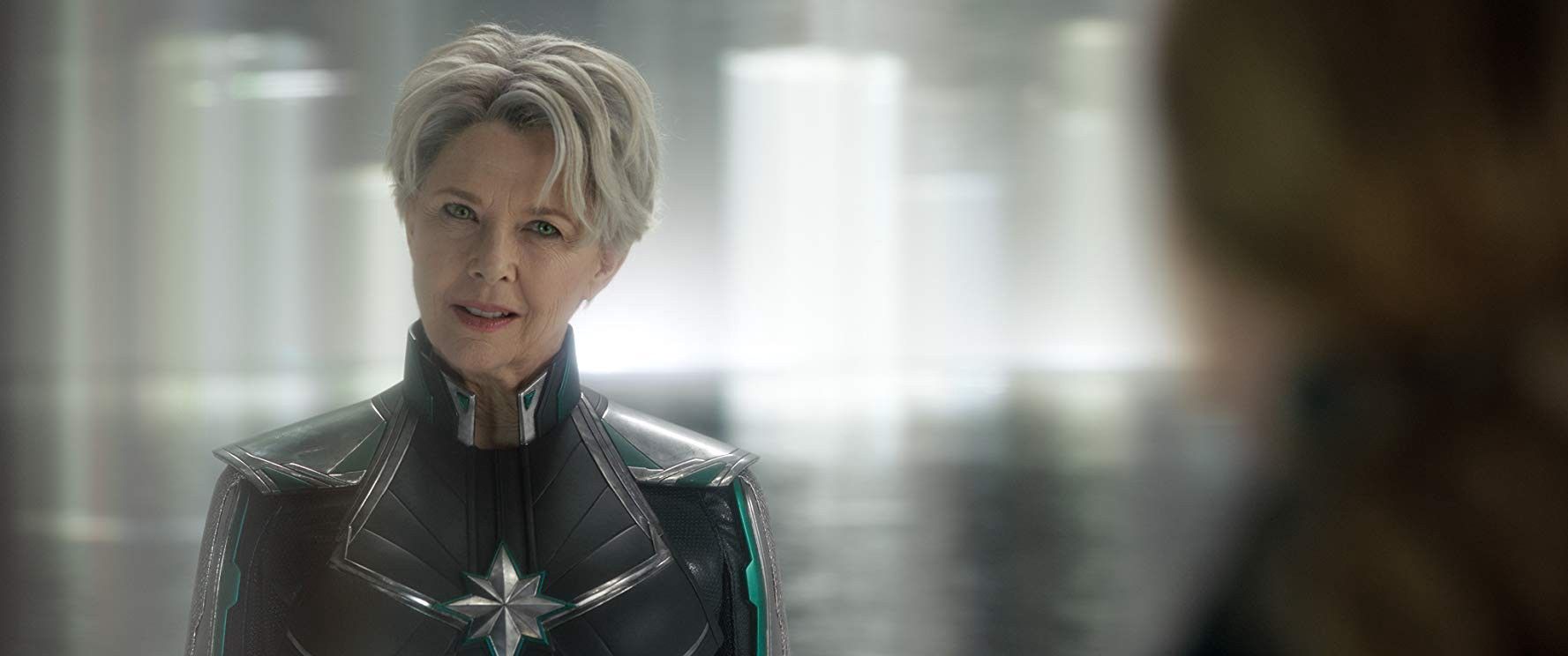
The Supreme Intelligence berates Danvers for being too emotionally unstable and impulsive to be an effective soldier. The SI threatens to take back Danvers’s powers if she doesn’t submit. As she confronts the SI, Danvers’s memories of the test crash flood back to her. She remembers Mar-Vell saying the experimental engine could help save many lives. She remembers being shot down over the desert. She remembers Yon-Rogg arriving to take possession of the engine. She remembers him killing Mar-Vell when she tried to destroy the engine. She remembers shooting the engine herself, and she remembers the power drawn from the Tesseract being unleashed in the explosion and washing into her body.
Her powers were not from the Kree. The cybernetic implant does not grant her the ability to manipulate energy; it inhibits this ability. Realizing this, Danvers rips the implant from her neck, escapes the VR space, and attacks the Star Force. Now in command of her full powers, she is able to blast the Kree soldiers with beams of light, and to fly up into space to confront Ronan and the Accusers, whom Yon-Rogg had summoned to destroy the Earth. She swiftly takes down the Accusers’s missiles and several of their ships before Ronan calls off the attack.
Returning to Earth, Danvers finds Yon-Rogg and, after blasting him up against a boulder, sends him back to Hala with the message that she would be back to guide the Skrulls to a new home. Before she leaves, she rewires Fury’s pager to be able to contact her if Earth was ever threatened again.
The film closes on Fury in his office, writing up a report on the extraterrestrial attack, and a proposal calling for the assembly of mighty heroes who can defend the world should something similar happen in the future: The Avengers Initiative, named for Danvers’s callsign during her airforce career.
In the mid credits scene, set after the events of Avengers: Infinity War, Danvers responds to the pager’s beckon, arriving at Avengers headquarters and asking to meet with Fury.
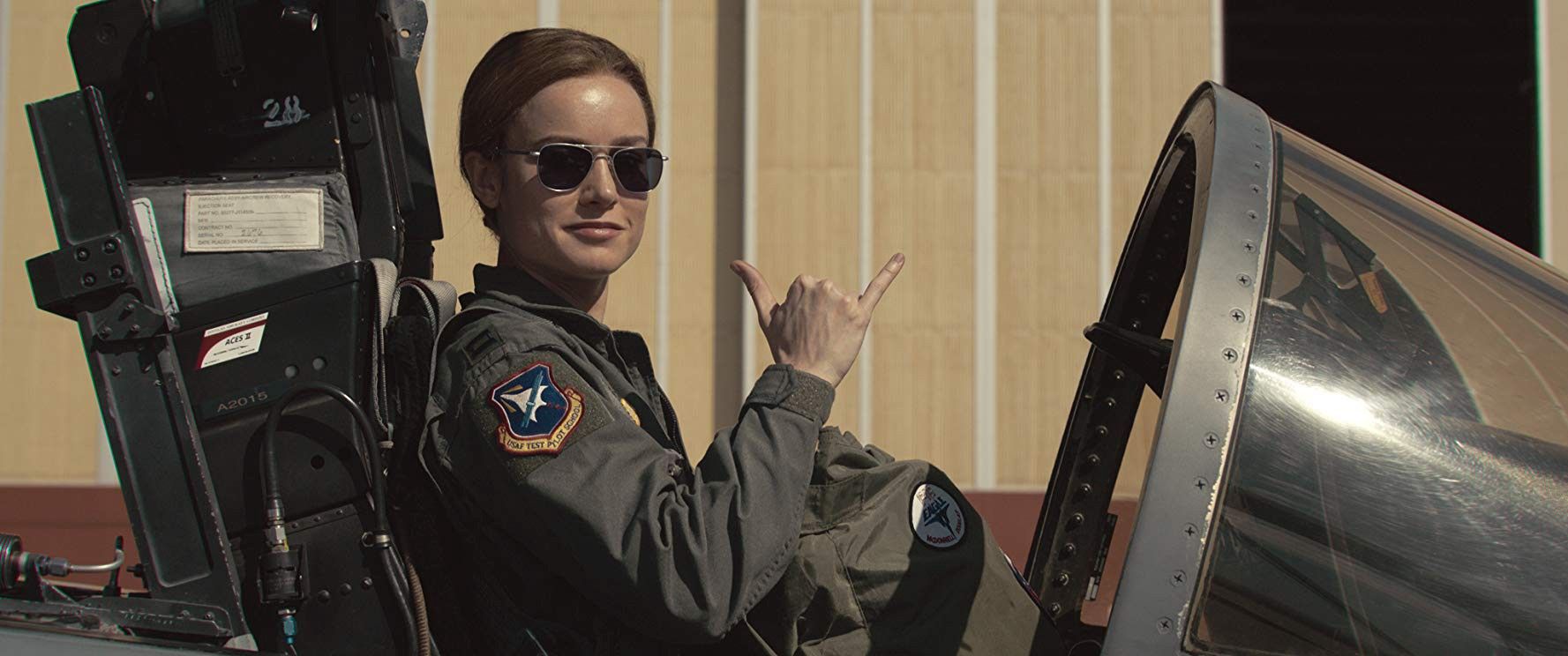
Analysis
This film has, so far, been received as one of the weaker MCU films. While I wouldn’t put it on the top of my list of Marvel movies, I’ve seen worse. And I haven’t even seen several of the really weak MCU entries (Iron Man 2, Thor: The Dark World). This film has some real strengths, to be sure, and I feel like the film-makers successfully made the film that they set out to.
Captain Marvel’s biggest strength is its efficient worldbuilding. I have yet to see the Guardians of the Galaxy films or the Agents of Shield television series, so this was the first time seeing the Kree and the Skrulls on-screen. And, without needing to feature opening narration or a text crawl, it presented the Kree Empire in a way that I understood. And, yes, if I had the background from those previous stories, the film might have been a richer experience, but I never felt lost watching this.
The twist of the film is made very effective by the establishment of its setting. In the beginning, the Skrulls’ shapeshifting abilities make them an obvious threat to the Kree, as they could be to any society if they chose to be. But when more is revealed about the Skrulls’ war later in the film, the Kree villainy doesn’t come out of nowhere. The Kree were already established as a hyper-rationalist, collectivist people from the start, and, while this doesn’t immediately mark them to be as obviously evil as, say, HYDRA, they certainly aren’t the sort of people usually portrayed as heroes in American film. So when the film turns against them, it’s a lot less jarring than it might have been.
All this leads into another unique aspect of this film. We’ve had great MCU villains, and poor MCU villains; this is the first MCU film I’ve seen since…probably the first Thor film wherein the central plot conflict was not with a villain. The antagonist is Danvers’s amnesia, which, while certainly related to the Kree, is not the Kree. Danvers does not win when she takes down the Accusers’ rockets, or when she overcomes Yon-Rogg, or even when she shakes off the Kree tech that restrained her powers. She wins when she remembers her past and realizes that she is not beholden to the Kree.
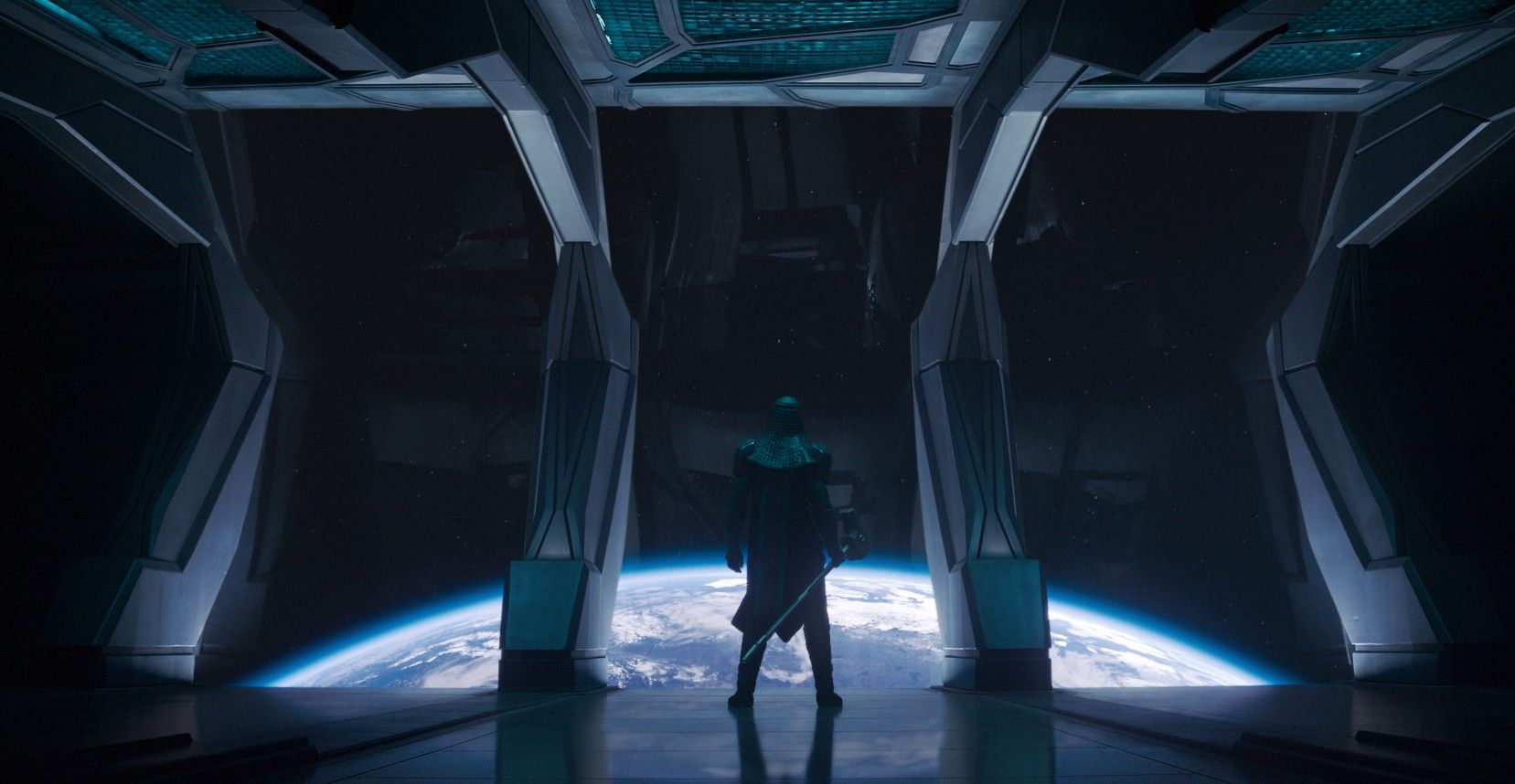
There’s a reason that such a plot doesn’t have much precedent in superhero films: it isn’t very exciting. Captain Marvel is very interesting; it’s above-average drama for a superhero film. But it isn’t particularly flashy, or thrilling, or visually memorable in any of the usual superhero film ways. As part of a larger trend of superhero films being released every few months, I’m not sure if this is a problem or not. Personally, I found it kind of refreshing. As much as I can still appreciate good action setpieces, I’m really bored of mediocre action setpieces. Except in more stylized films like Doctor Strange and Thor: Ragnarok, I’ve found the final action scenes in most Marvel films to be the weak parts. The final fight between Spider-Man and Vulture was a boring slog; the final fight between Black Panther and Killmonger was a boring slog; the big battle in Wakanda between the Avengers and Thanos’s hordes was a boring slog. While Captain Marvel might not have as many heart-pounding thrills as some other superhero films, but it doesn’t have any boring slogs in it either. There’s not a scene in here that I tired of.
On to performances: Samuel L. Jackson is the full-on co-star in this film, and he takes advantage of it. His take on a younger Nick Fury has…youthful exuberance is the wrong term since he’s still at least middle-aged in this film, but he has a few times to smile here, in contrast with his uniformly stone-faced appearances as Fury as we’ve seen him before. I liked the character here, though I’m not sure how well it fits with the Fury of the other films; he’s really just a basic federal agent here, without the grand chess-master sensibility we’ve come to expect from Fury.
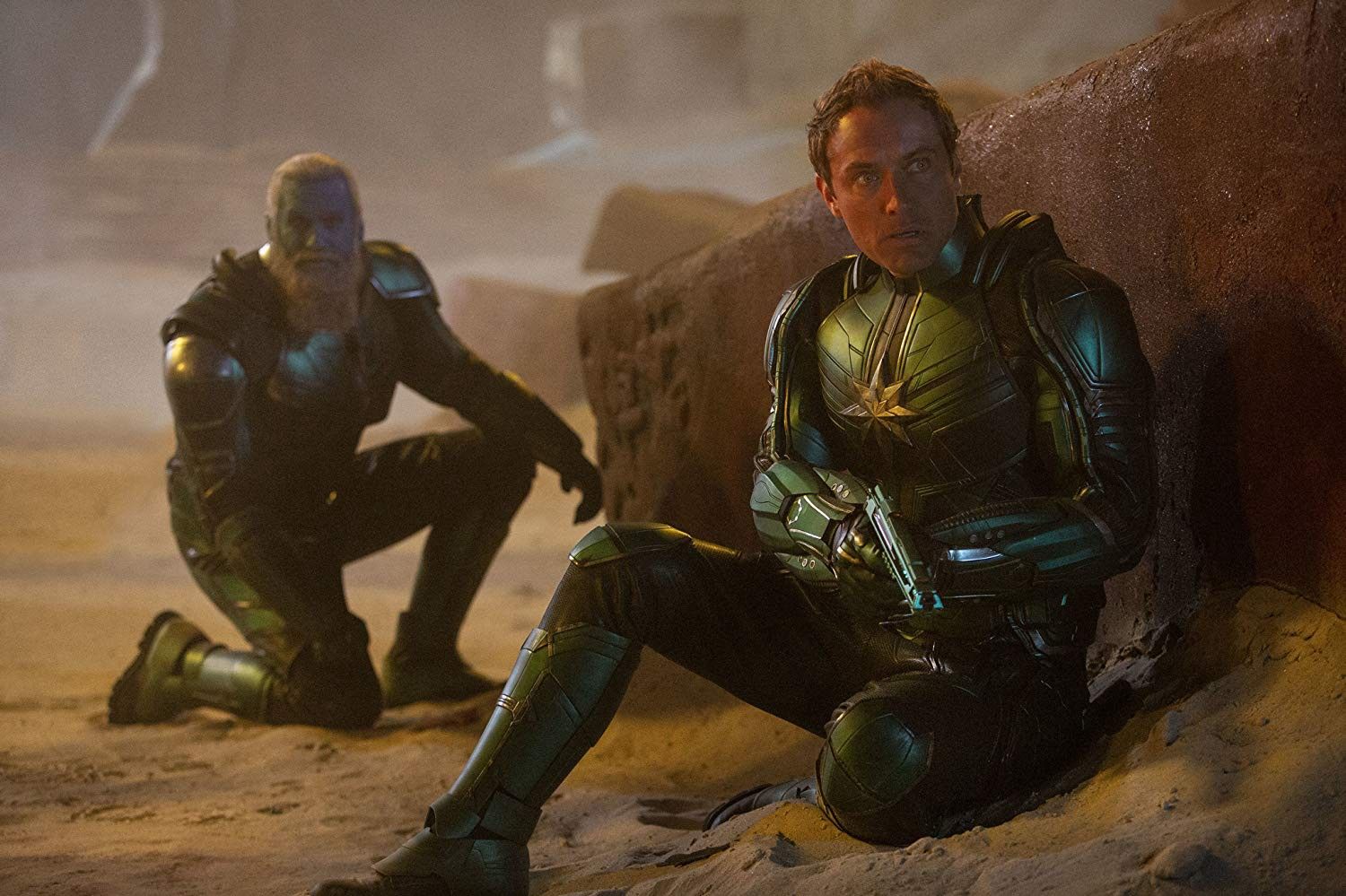
Jude Law as Yon-Rogg could have been anyone really. He wasn’t bad, but he didn’t have much to do. Djimon Honsu was in this film for a bit; he didn’t do anything either, but he was still an engaging screen presence whenever he did appear. Frankly I’d have as soon have seen his character fill Yon-Rogg’s role in the film. I suppose it might be that the Kree are sort of Vulcan-ish, hyperrational people, and Law was playing it boring on purpose, but even his desperate anger as he tries to recapture Danvers in the film’s climax fell a bit flat for me. If he’d been more completely passionless while he had been ordering the eradication of the Skrull refugees, that would have been at least creepy. But he was only mostly passionless, so he came off bland.
I’m glad that, after an American debut as the villain of Rogue One, and after a series of diminishing returns portraying variations of that character in Ready Player One and Robin Hood, Ben Mendelsohn got the chance to play another character. Talos isn’t a hero, but he isn’t quite the villain here, either, despite the sinister edge Mendholson brings to the character. The Skrulls overall were probably the most interesting thing in the film: They are, in this moment, sympathetic characters, who you hope reach their goals. But I can definitely see some Skrulls, not Talos and his people necessarily, but some Skrulls being villains in some future MCU film. The Skrulls propose a similar question to the ones at the core of the X-Men films, Batman v. Superman, and Captain America: Civil War: how much can you trust someone who, by their nature, can harm you in ways you can’t fight back against. Talos isn’t interested in conquering Earth, but the film makes it clear that he could have, easily. He took control of SHIELD in service of his own agenda that didn’t much involve SHIELD, but he did take control of SHIELD.
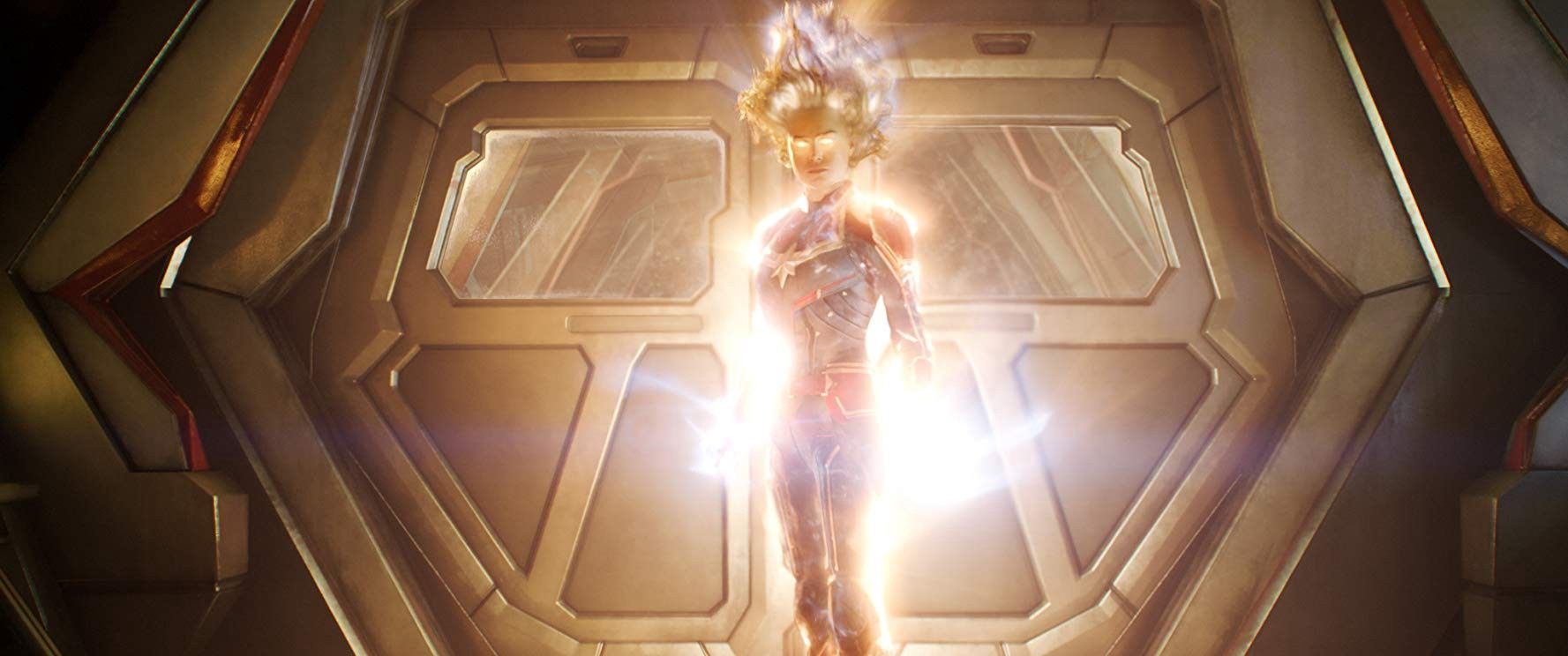
Brie Larson’s titular Captain Marvel (I take from context clues that that’s the character’s obligatory superhero alias, though no one calls her Captain Marvel in the entire film.) was better than the trailers made her out to be. I was anticipating a hapless amnesiac, and while Carol Danvers is an amnesiac, she isn’t a new amnesiac. She’s lost memories beyond the past six years, but in the past six years she’s found a life in the Kree Spaceforce, so, at the beginning of the film, she is not the blank slate I was worried she might be. Beyond that, I think that Larson’s performance was, much like the film as a whole, good in ways that might easily go unappreciated.
I’ve always found it odd when an actor plays multiple roles in some work and gets praise they wouldn’t get for playing the same two characters in separate works. It is, after all, an actor’s job to pretend to be another person, and if they can successfully do that once, it’s always seemed that the number of times they do so on top of that probably shouldn’t linearly multiply the difficulty of adopting personas. I mention this because I don’t want to be taken to be doing the same thing when I give Larson credit for the differences in her performances in the main timeline and in the flashbacks. She doesn’t play different characters, she plays the same character differently. The mainline Danvers has spent years as a Kree soldier, without memory of anything else, so Larson’s performance here is very steady and mission-oriented, and very concerned with meeting the expectations of Yon-Rogg. In flashbacks, when Danvers is a US Airforce test pilot, the performance is subtly different: boiled down, these are the scenes where Danvers is shown as an individual with some personal agency, rather than the underperforming cog in the grand machine of Kree society. It is to this state that Danvers returns by the end of the film, when she throws off the dominion of Yon-Rogg in the immediate moment and of the Kree hegemony overall. While the film doesn’t explicitly draw attention to it, it is with this personal arc that her story works in parallel with that of the Skrulls, in ways that it didn’t necessarily have to. I appreciated that.
That said, getting away from evaluation of Larson’s performance, in a lot of instances Danvers feels more like she’s been roped into other people’s stories than she is living her own. I’d make the argument that from a structural perspective, Talos is the actual protagonist of Captain Marvel, which, ideally, he wouldn’t be, since he’s not a perspective character. Danvers spends every minute of screentime executing the will of some other character: either she’s a Kree soldier, working for the Supreme Intelligence (under false pretenses), or she’s in a flashback sequence working for Dr. Lawson (again, under false pretenses, at least up until the day of the crash), or she’s providing fire support for Talos and the Skrulls. She rediscovers her past because of Talos’s actions, initially. And even in the final scene, she returns to Earth because Nick Fury summoned her, and her first act is to ask for him, presumably to receive her directions from him. This doesn’t make Danvers a weak character by itself, but combined with the fact that she doesn’t have any major personal conflicts once she has remembered her past, it kind of does. She doesn’t have a family to fight for like Hawkeye, or dying ideals to defend like Captain America, or a nation to lead like Black Panther or Thor.
At the end of the film, Ronan the Accuser refers to her as a weapon, which is pretty true. And I worry she won’t be much more than that in Avengers: Endgame, though she might. Going forward, I think Danvers needs something to do besides just fight whoever the villain is, or else she’ll become another War Machine-type character. In the comics, Danvers is a big champion of women in general, which could be a good road to follow. We see, in flashbacks, that Danvers faced a good bit of sexism as a test pilot from at least one of her colleagues, but not a lot was done with that. It just sort of happened as sympathy producing character background
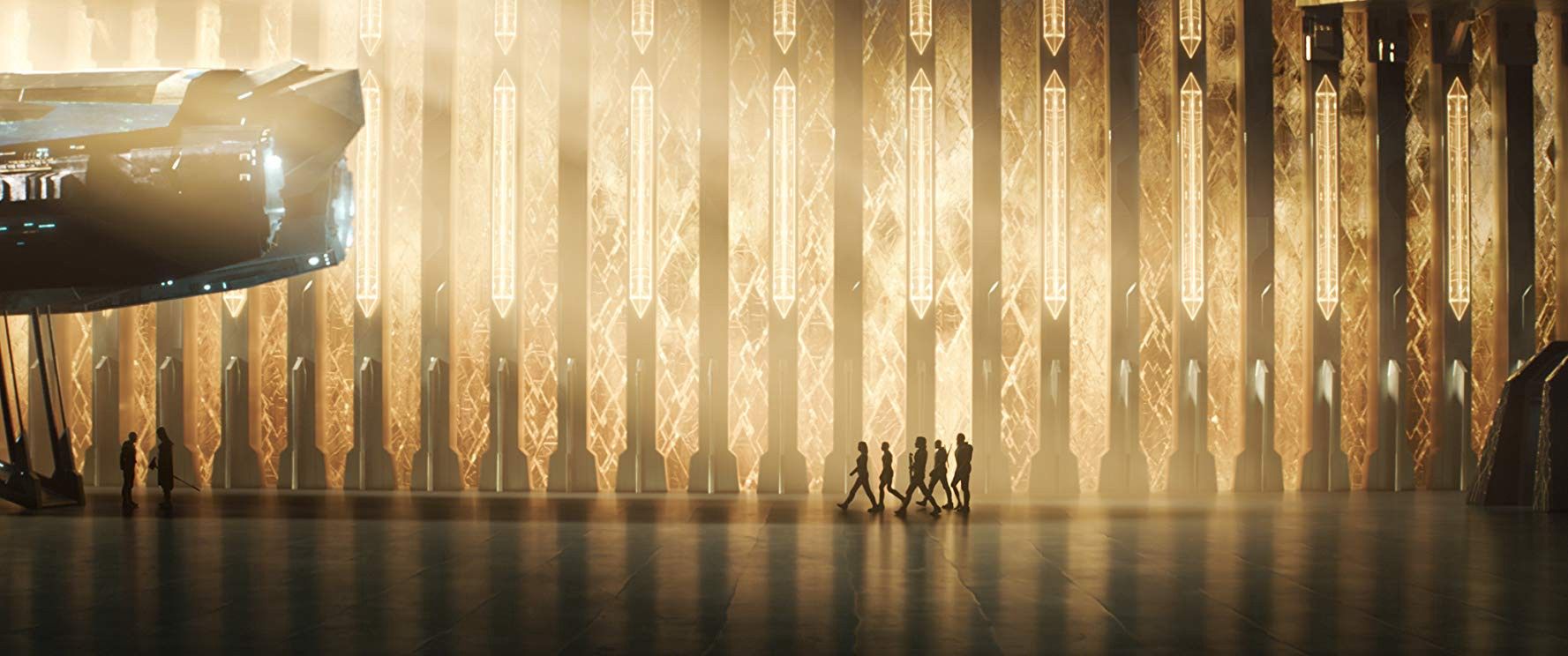
On to the technicals: the effects work in this film is more up to par for a late-2010s sci-fi action film than they were in last year’s MCU spring entry, Black Panther, so that’s good. The anti-aging effects on Samuel L. Jackson are particularly noteworthy; they looked much more natural than the same techniques applied to Robert Downey, Jr. in 2016’s Captain America: Civil War, which is an achievement given how well Downey was de-aged in that film. Clark Gregg’s de-aging was more noticeable, but still passable considering his more limited screen time.
The CGI cat/flerkin was a bit dodgy. It was the only thing that stuck out to me as fake looking in some shots.
The action directing was fairly standard for Marvel, which isn’t really a compliment. Except for the final scenes wherein the Accusers' fleet is destroyed, which was quite good, and the opening sparring match between Danvers and Yon-Rogg, which was shot pretty well. The battle, of sorts, between Danvers and the Supreme Intelligence was short, which was good, because it lacked tension (due to being in virtual reality, especially) or visual interest (energy beams, etc.).
The designs of the Skrulls were good overall, but they all kind of looked too similar to me, like there were only about two or three different molds that they made everyone’s masks from.
The music this time is by Pinar Toprak, a protege of Hans Zimmer, who seems to have passed on his taste in orchestral-symphony-but-also-there’s-some-synthesizer-in-it. Toprak’s score is fine. It has discernable character motifs, and fits well with the scenes it accompanies. Marvel music is rarely all that memorable though, and this isn’t an exception, really. More up-in-front, as it was in Thor: Ragnarok, is the film’s soundtrack, this time composed, appropriately enough, of ’90s tunes, which accompany much of the moments of the film wherein the music is the focus.
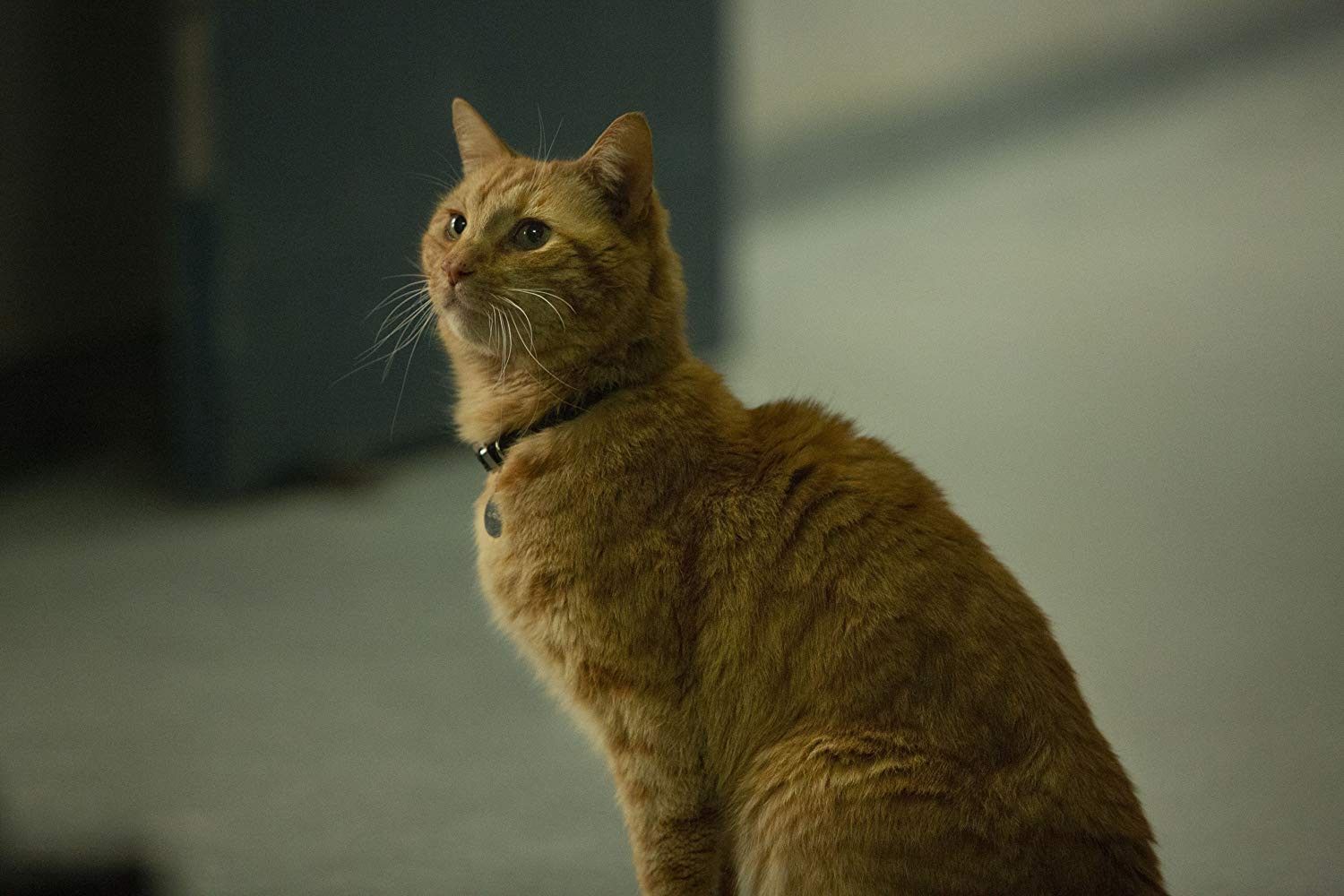
Recommendation and Rating
If you’re a big Marvel fan, you’ve probably seen this. If you’re a small Marvel fan, who’s looking forward to Avengers: Endgame in a few months after seeing Infinity War but you missed, say Ant-Man and the Wasp, you’ll probably want to catch this one, as Danvers is likely to play a big part in Endgame.
If you aren’t a Marvel fan, I don’t think I would say definitely see this, but if you did, you wouldn’t be lost in the way you would be seeing many of the other MCU films of recent years.
8/10 — Without significant negative worth. Able to be recommended, at full price, without reservation.


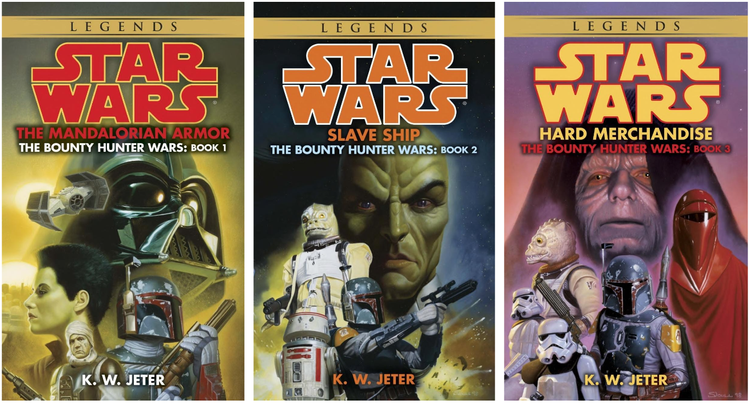



Member Commentary